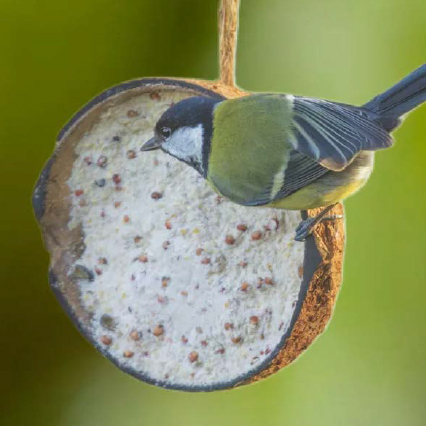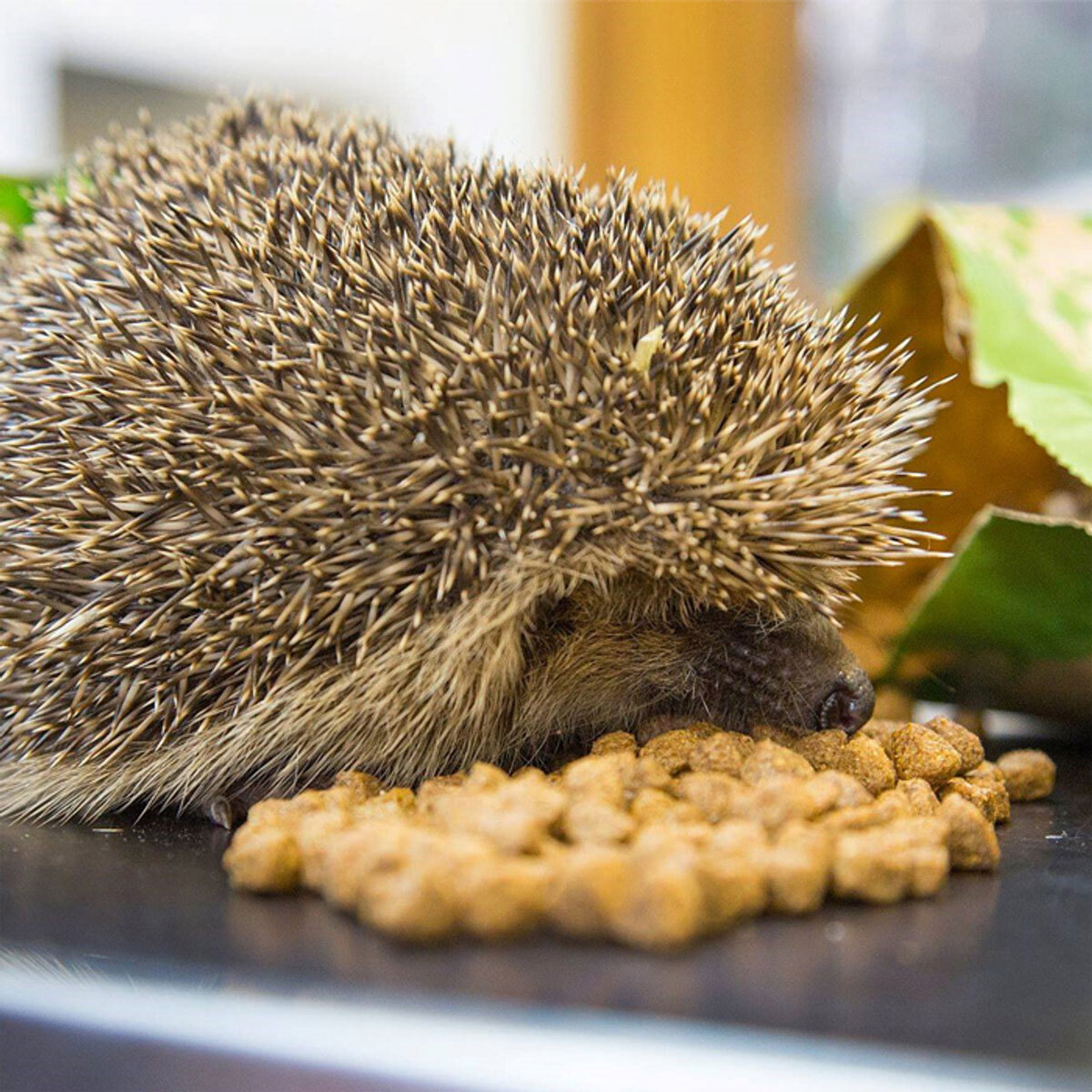Creating Your Garden Wildlife Sanctuary
Posted by Josie Owen on 28th Mar 2025
Transform Your Garden into a Thriving Wildlife Sanctuary
Creating a wildlife-friendly garden is a rewarding way to connect with nature and make a positive impact on local ecosystems. Whether you have a small urban space or a sprawling backyard, there are simple steps you can take to nurture birds, small animals, and insects. These creatures are essential for maintaining biodiversity, pollinating plants, and keeping pest populations in check. Here's how you can help them thrive in your garden.

Looking After Your Feathered Friends
Birds bring beauty, joy, and life to any garden. But to keep them healthy and safe, we need to provide for their needs all year round. Whether you're an experienced bird watcher or a beginner, here’s how you can make your garden a bird haven with just a few thoughtful additions.
Provide Nutritious Food Sources
To keep birds energized and healthy, offering a variety of nutritious food is key. Different species have different tastes, so mix things up to cater to all kinds of feathered visitors.
Bird Seed: Stock up on a mix of seeds like sunflower, millet, and safflower. Each type attracts different bird species. You can also provide suet to give extra energy during colder months.
Native Plants: Grow native plants that offer natural seeds and fruits. Species like coneflowers, sunflowers, and black-eyed Susans will help birds find food naturally while adding beauty to your garden.
Water: Birds need water to drink and bathe in, so don’t forget to provide a shallow birdbath. In the colder months, consider adding a heater to prevent freezing. Birds rely on fresh water, especially during dry spells and winter.
Tip: Try offering a mix of bird food in different feeders—tube feeders, platform feeders, and suet cages—to attract a variety of birds.
Create Nesting and Shelter Areas
Birds need safe spaces to nest, rest, and hide from predators. By providing these, you'll give them the protection they need to thrive.
Nest Boxes: Install birdhouses that cater to different species. Small birds like tits and wrens prefer small entrance holes, while larger birds like woodpeckers need bigger ones. Choose different sizes and shapes of birdhouses to suit a range of species.
Hedgerows and Shrubs: Plant dense, bushy shrubs and trees that provide shelter. Native species like hawthorn, elderberry, and blackthorn are perfect for creating natural cover. These plants not only give birds a safe place to perch but also provide them with berries and insects to snack on.
Leave Dead Trees: If it’s safe to do so, leave dead trees or snags standing. These trees serve as homes for cavity-nesting birds, including woodpeckers and owls, who use the tree trunks for nesting and feeding.
Tip: Choose a mix of evergreen and deciduous plants to offer shelter throughout the year. Evergreen trees and shrubs provide cover in winter, while deciduous plants offer food in warmer months.
Keep the Area Safe and Natural
The environment you create is just as important as the food and shelter you provide. A safe, natural space will help birds stay healthy and protected from harm.
Avoid Chemicals: Pesticides and herbicides can harm birds and contaminate their food sources. Opt for organic alternatives or natural pest control methods, such as attracting beneficial insects like ladybugs, which can help control harmful pests without harming birds.
Predator Protection: If you have cats or other predators, make sure your bird feeders are placed in safe locations, such as high up or in areas that are difficult for predators to reach. Also, create dense cover with shrubs or tall grasses to provide protection for smaller birds.
Tip: If you have outdoor pets, supervise them while they’re in the yard to keep them from hunting birds. Cats, in particular, can be dangerous to birds, especially during nesting season.
Welcoming Small Wildlife To Your Garden

Small animals like hedgehogs, rabbits, squirrels, and foxes play a crucial role in maintaining a healthy, balanced garden. They help control pests, aerate the soil, and add charm to the natural environment. If you want to make your garden more inviting for these creatures, here’s how you can provide the shelter, food, and habitat they need to thrive.
Provide Shelter and Safe Spaces
Small animals need safe spaces to hide, nest, and hibernate. By offering a variety of shelter options, you can help them find comfort and safety year-round.
Brush Piles: Instead of discarding garden trimmings, pile up leaves, branches, and sticks in a quiet corner of your garden. These brush piles serve as perfect hiding spots for small mammals and insects, offering them protection from predators and the elements.
Hedgehog Homes: Hedgehogs especially need safe, quiet places to rest, especially during hibernation in the winter. You can buy or build simple wooden hedgehog houses. These low-maintenance homes provide hedgehogs with a secure spot to sleep and nest.
Wildlife Corridors: If your garden is surrounded by fences or walls, create small gaps or low points in them to allow hedgehogs and other small mammals to move freely between gardens and natural areas. These wildlife corridors are important for the animals' safety and mobility.Wildlife Corridors: If your garden is surrounded by fences or walls, create small gaps or low points in them to allow hedgehogs and other small mammals to move freely between gardens and natural areas. These wildlife corridors are important for the animals' safety and mobility.
Offer Food and Water
Food and water are essential for small mammals, particularly during colder months when natural resources are scarce. Providing consistent, accessible food sources will support their survival and well-being.
Wildlife Feeders: Place a wildlife feeder near the edge of your garden, close to shelter spots. You can offer unsalted peanuts, seeds, and mealworms to feed hedgehogs, squirrels, and other small mammals. This ensures they have easy access to nourishing food.
Compost Piles: Small mammals often forage through compost heaps, looking for insects, food scraps, and shelter. Creating a compost pile not only offers food but also provides a secure place for them to hide and rest.
Fresh Water: Like birds, small mammals need fresh, clean water to stay hydrated. Set up a shallow bowl or dish in an easily accessible spot, and remember to change the water frequently to keep it clean and fresh.
Tip: Consider placing your feeders and water dishes in different parts of the garden to encourage a variety of wildlife to visit.
Encourage Natural Habitats
Small animals are drawn to gardens that mimic their natural environments. By incorporating wild, natural elements into your garden, you can create a habitat that meets their needs and encourages them to stay.
Long Grass and Wildflower Areas: Let parts of your garden grow wild with grasses and wildflowers. These areas provide excellent cover for small mammals and insects, while also offering seeds for food. A wild corner of your garden will quickly become a haven for local wildlife.
Fruit and Nut Trees: Planting fruit trees like apple, pear, or hazelnut will attract animals like squirrels and rabbits. These trees not only provide a steady food source, but their branches also offer places for animals to hide and rest.
Tip: If possible, avoid mowing certain parts of your garden to allow wildflowers and grasses to grow. The more diverse the plant life, the more appealing your garden will be to wildlife.

How to Support Pollinators and Beneficial Bugs
Insects are vital to a thriving garden. From pollination and pest control to improving soil health, these tiny creatures play a big role in maintaining ecological balance. By catering to a diverse range of insects, like bees, butterflies, and beetles, you can create a healthy, sustainable garden. Here’s how you can provide the care they need.
Provide Pollinator-Friendly Plants
Pollinators like bees and butterflies are essential for many plants to reproduce. Offering them a variety of flowers that provide nectar and pollen will ensure a steady food supply and help maintain healthy insect populations.
Nectar-Rich Flowers: Choose flowers like lavender, daisies, echinacea, and marigolds. These flowers are rich in nectar, attracting bees and butterflies while adding vibrant color to your garden.
Wildflowers: Native wildflowers such as cornflowers, poppies, and clovers are not only beautiful but are also a magnet for pollinators. These plants are ideal for supporting a wide variety of insects and can be easily incorporated into any garden design.
Flowering Shrubs: Don’t forget shrubs like elderberry, hawthorn, and lilac. These flowering plants are particularly popular with bees and butterflies and provide a longer-lasting food source.
Tip: To support a continuous supply of food, try planting flowers that bloom at different times of the year, ensuring your garden attracts pollinators from early spring to late autumn.
Create Safe Habitats
Insects also need safe places to hide, nest, and reproduce. By offering a variety of habitats, you can provide shelter for beneficial insects and promote biodiversity in your garden.
Insect Hotels: Construct simple insect hotels using bamboo, hollow stems, or wood. These little "homes" offer solitary bees, ladybugs, and other insects a safe place to nest and lay eggs.
Leaf Piles and Logs: Instead of raking up every leaf, leave some piles around your garden. Fallen leaves, sticks, and logs provide essential hiding spots for beetles, ants, and other insects that play an important role in soil health.
Pond or Water Feature: If you have space, add a small pond or water feature. This creates an ideal habitat for water-loving insects like dragonflies and damselflies. Make sure the water is shallow enough for insects to land on and use for breeding.
Tip: A diverse range of habitats will encourage a variety of insect species. Consider creating different areas like wildflower meadows, leaf piles, and even a small water feature to attract as many insects as possible.
Avoid Pesticides
While it might be tempting to use chemicals to control pests, pesticides can harm beneficial insects that are vital for a healthy garden. Instead, try these eco-friendly alternatives to maintain a balance in your garden.
Natural Pest Control: Encourage beneficial insects like ladybugs, lacewings, and predatory beetles. These helpful insects will naturally control pests, reducing the need for harmful chemicals.
Organic Alternatives: If pest control is necessary, opt for natural remedies like neem oil or garlic sprays. These organic options target pests without harming your beneficial insects.
Tip: If you need to remove pests, always check to make sure you’re not disturbing the good bugs. A gentle approach like hand-picking pests or using a strong jet of water can often do the trick without causing harm to your garden’s insect population.
Creating a garden that supports birds, small animals, and insects is an ongoing process, but it’s worth the effort. Not only will your garden thrive, but you’ll also be doing your part to support local ecosystems. By providing food, shelter, and safe spaces, you’ll attract a diverse array of wildlife, each playing its own role in maintaining a healthy, balanced environment.
By creating spaces for these creatures, you’re ensuring that your garden becomes a sanctuary for wildlife—one where nature and humans can coexist harmoniously.
Creating a wildlife-friendly garden is a rewarding way to connect with nature and make a positive impact on local ecosystems.





